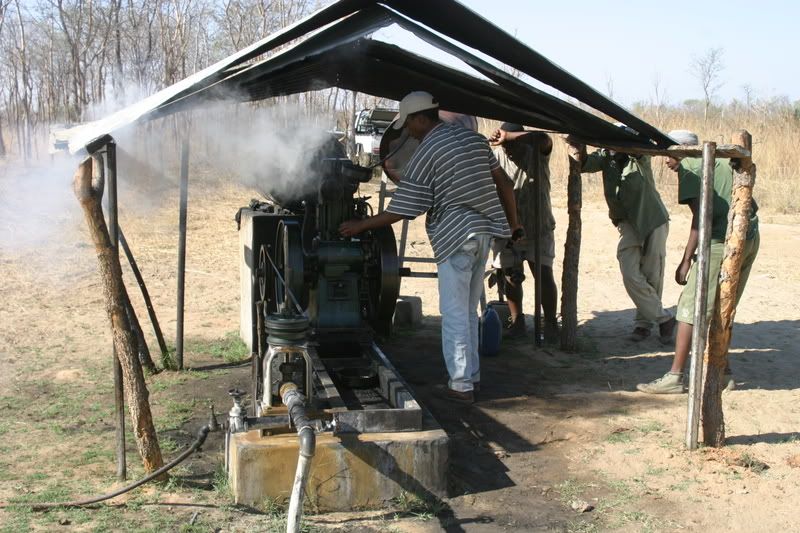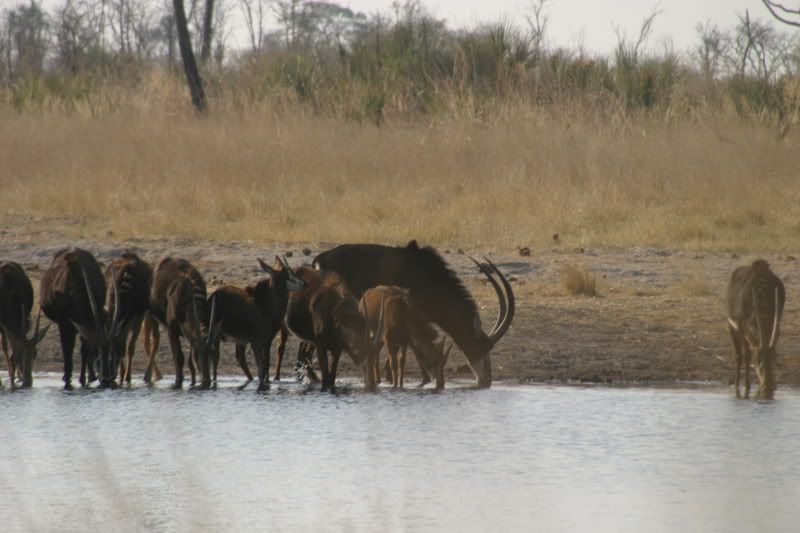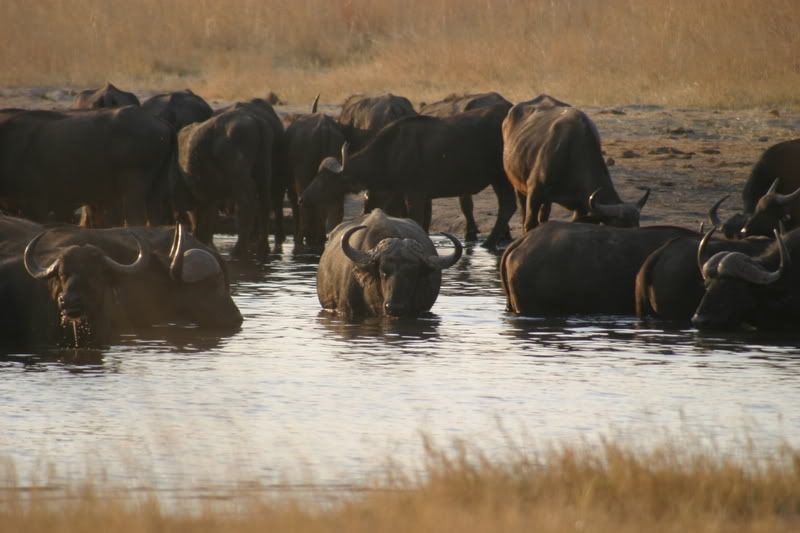Jumbos may die of thirst, says ZimParks
Jumbos may die of thirst, says ZimParks
http://www.thestandard.co.zwSunday, 15 July 2012 11:13
BY NQOBANI NDLOVU
BULAWAYO — The Zimbabwe National Parks and Wildlife Management Authority
(ZimParks) has warned that dozens of elephants at Hwange National Park could
die from thirst due to a shortage of water, as available wells continue to
dry up.
The authority is now seeking funds to buy at least 20 000 litres of diesel
to pump water, between now and the rainy season. The water would be pumped
to elephant drinking points in the park to avert a repeat of the 2011
scenario when close to 80 animals died of thirst between June and October,
resulting in a loss of US$4 million.
Hwange National Park has no year-round rivers and little natural surface
water and therefore depends on wells that pump water to artificial watering
holes, known as pans.
Caroline Washaya-Moyo, the ZimParks public relations manager, said the
authority was sourcing for funds and engaging interested stakeholders in a
bid to ensure that wildlife would not be lost due to shortages of water.
“The ever-increasing temperatures last year left wildlife succumbing to
heat,” Washaya-Moyo said.
“In terms of the value of elephants that we lost in 2011, it is calculated
using the compensation value of an elephant, pegged at US$20 000 in 2011 and
has since been reviewed upwards in 2012 to US$50 000.
“This applies to all categories, be it a calf, adult or sub-adult.”
Watering holes and other sources of water that are fed through pumping,
dried up last year, resulting in the alarming rate of deaths of elephants.
Currently, Hwange National park has an elephant population of over 45 000
against its carrying capacity of 30 000, putting a severe strain on
available resources, especially water.
16 July 2012, 02:05
bcolyerI'll tell you what guys.....IF you really want to get the full picture of the value of water to the Hwange. You should get and read Ron Thompson's book - "Stand Your Ground". Besides the wonderful hunting stories and reflections, it will give you a picture of the park, it's development and water point bore hole projects through the formative years of 1960-1963. It is hard to believe that SO MUCH took place in the Hwange during those years. Anyway, it will for sure give you a picture of the importance of pumping H2O for the wildlife. Especially the elephant.
16 July 2012, 15:50
Milo ShanghaiSounds like the area in question no longer forms a suitable natural habitat for elephant.
The act of making it artificially, probably only temporarily, viable has issues.
16 July 2012, 20:59
dwarf416When I was there in early december 2011 I was impressed of the devastation produced by the lack of water.Allthough Matupula hunters mantains 14 permanent waterholes pumping water 24 hours a day, thanks to Houston Safari club, Some texan privare donors and the Sheik of Quatar, they would need even more help.
During the Dental Safari in Tsholotjo( free dental care for the villagers in the communal areas) Supported by D3 (Texas Charity) Matupula hunters and myself i took the group of dentists into Hwange and we saw in a very reduced area over 10 corpses of elephants that had died of thirst. This is with this pumps working non stop 24 hours a day. Matupula would love to mantain more pumps but does not want to ask for more to their donors. This year the draught is even worse so we will see what happens

When i get back of this year dental safari i will know.
16 July 2012, 21:18
GatogordoI don't see the problem, just ask Peta, Fund for Wildlife, HSUS, etc for funds.

Tragic that this may be, I am glad to see that Elephants are truly getting valued. It's absolute proof that if you take away their value it would be just a case of letting them die for naught.
18 July 2012, 01:43
Tom In TennesseeAgree with bcolyer....I think Thompson's book notes that "natural" numbers of Eles in the area now encompassed by Hwange was around 4000 passing thru.....since they wont let us hunt an adequate number to control devastation (can you say Botswana? Zambia?), maybe a mass dying of thirst would be a good thing!!! Maybe even RSA would wake up to how many Eles Kruger NP can support!
19 July 2012, 00:46
Frank MartinezThis was a daily routine one mile from the Hwange Park border. Elephants came in at night while the other herds and individuals including Roan came in throughout the day. The little pump was needed to keep the pan filled. Elephants often dug up the water pipes which were buried in rock and cement at the head of the pond.



19 July 2012, 05:54
Bwana338The rain missed a wide swath this year and there will be die off in all game animals.
Elephants will dig up water lines and then it may take a day or 2 to make repairs and provide a cover so it will not be dug up in that location again. On going issue with elephants.
The country has 2 many elephants now and this could be the start of the gradual die off to match the range carrying capacity.
20 July 2012, 00:07
Hunt the SunImagine foreign hunters shooting affordable management packages instead of culling/die off!


